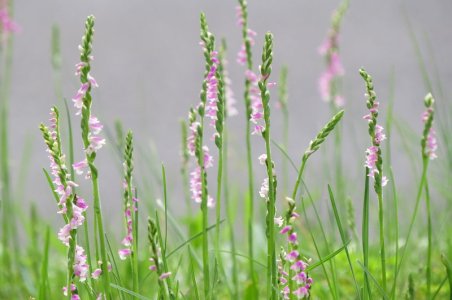By: Kawara no Sadaijin (822-895) 河原左大臣
Surrounded by this みちのくの
Intricate print, しのぶもぢずり
Becoming 誰故に
Dyed and tangled, 乱れそめにし
Trapped in secret love 我ならなくに
Kawara no Sadaijin was a title for Minamoto no Toru (源 融), a statesman and poet who was the grandson of Emperor Saga and a part of the Saga Genji clan. Claimed by some to be the model for the protagonist of The Tale of Genji, the only other really notable claim for Minamoto is this tanka that he wrote, which is also included in the Kokin shu as No. 724.

Shinobu Mojizuri ferns | 宮代NOW
In my notes, it states that the poet saw an intricately print of ferns on cloth, which reminded him of the tangled and chaotic state of his own feelings towards the woman he loved. Furthermore, Michinoku (the first line of the tanka) was renowned in Ancient Japan for printed cloth, and Shinobu (the start of the second line of the tanka) was an area within Michinoku, which emphasises how intricate and fine the poet’s emotions would have been.

Fukushima Prefecture | Must Love Japan
A quick Google search revealed that Michinoku is in fact, the ancient name for Fukushima-shi, in Fukushima prefecture in the Tohoku region of Japan. Although it gained fame (or infamy?) internationally as the site of the 2011 Tohoku earthquake, during the Nara and Heian years, Michinoku was actually a frontier area, and famous for its shinobu mojizuri fabric (the second line of the tanka).
The translator also notes that the pronunciation for fern is the same as for remembrance or concealment, which therefore gives the poem the meaning of either concealment through the fabric or the ferns, or remembrance through seeing the cloth or ferns.
Another translation gives this meaning clearer:
Whose fault is it
that my feelings have begun to tangle
like the tangle-patterned prints
of Shinobu from the distant north?
Since it is not mine, it must be…
(Mostow 1996)
This alternative translation also shows how Minamoto addresses this poem, as though to entangle his love with him within the fabric. Accompanying notes to this translation additionally shows that this poem has been interpreted as a defense by Minamoto of his faithfulness to his lover, which, due to the interesting choice in imagery to symbolise how upset he is at being doubted, could also be argued as a way of showing a secret love to another.
I mean, ‘whose fault is it’ could be both Minamoto reinforcing that it was not his fault that he fell in love with and is in love with his lover and that his feelings for her are as tangled as the prints of Shinobu, or that his heart has, against his will, begun to stir for another, tangling the feelings that he held for his current lover with his emotions for his new interest. I personally like the argument that he is trying to sort through his emotions for another, because it gives the poem more layers, which suits the imagery that he chose with the fabrics and ‘tangle-patterned prints’.

Shinobu Mojizuri fabric | わかればいいのに I Wish I Knew
It is also amazing that so much meaning can be conveyed within thirty one syllables, and it makes me respect Japanese poetry so much more, because as much as I love poetry, sometimes the way Western poets write seems so excessive and clunky, but here? It is so clean, and so sparse, but still containing so much meaning.
And the more I read these poems, the more I realise how lacking my copy of the Hyakunin Isshu is. It is enough to get me started, but it doesn’t provide enough information for my liking, and its translation seems clumsy or lazy compared to alternative translations that I can find on the internet. But maybe I just expect too much from my books.


